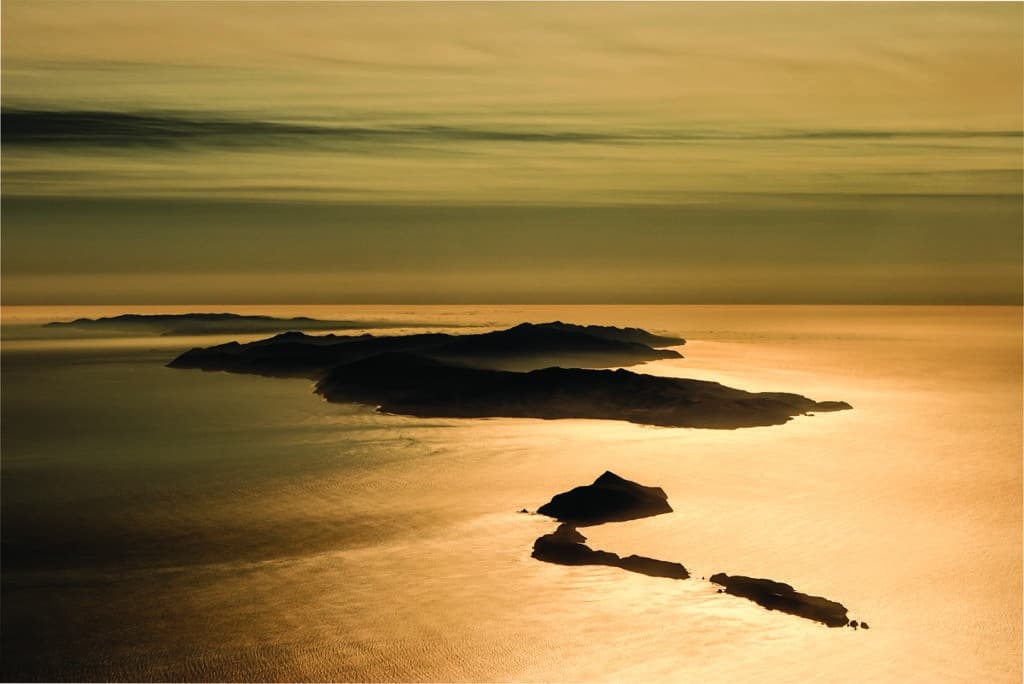
California’s Channel Islands in the Golden Late-Afternoon Sun
I settled into a steady rhythm of lift, wind on the drop and lift again, slowly moving the solid fish on the end of my line toward the surface. Tilting my head to one side gave me a clear view of six other anglers up the rail of Ventura Sportfishing’s Pacific Dawn, their rods bent into heavy arcs. Deckhands stood by to direct traffic, passing rods over and under each other as the fish coaxed anglers up or down the length of the rail.
Somewhere behind me, I heard hoots of excitement as a freshly hooked fish peeled line from another angler’s reel. Eventually I worked my quarry close enough for the deckhand to gaff it and hoist it over the rail in one smooth motion, where it joined a quartet of 30-plus-pound fish pounding out a steady drumbeat on the deck.
It wasn’t yellowfin tuna that had our crew of anglers working up a feverish sweat; it was a full-on blitz of big, mean California halibut.
This type of pulse-raising action is typical on offshore tuna trips, where multiple hookups can keep anglers and crew busy for hours at a stretch. We, however, were in the shadow of San Miguel Island, a wind-beaten outpost in Southern California’s chain of Channel Islands. Over the course of a muggy July afternoon, we rigged our dropper-loop rigs with live squid. Every time we drifted over a sweet spot, multiple anglers would get bit at once. As evening approached, we had tallied nearly 60 halibut ranging from 20 to 35 pounds. It was literally more big halibut than I had seen over my lifetime.

Embarrassment of Riches
We were alerted to this hot bite by Mirage, a popular charter boat from Channel Islands Sportfishing in Oxnard. We had been enjoying solid action ourselves at neighboring Santa Rosa Island, landing a handful of white seabass in the morning before moving into deeper water to target the area’s excellent bottomfishing. The enticing fish report, however, was just too much to resist. So we pulled up stakes and made the one-hour run farther outside to the shallows of San Miguel.
Such is the embarrassment of fishing riches the Channel Islands offers to visiting anglers. We broke a cardinal rule of fishing — never leave fish to find fish — and not only did it not cost us, but we struck a true bonanza.
The Channels Islands are rich in history and natural beauty. The five islands that make up Channel Islands National Park look much as they did when inhabited by the region’s Chumash Indians more than 10,000 years ago. The National Park Service and Nature Conservancy have worked for decades to erase damages from 150 years of European settlement and ranching activity, restoring native plants and protecting unique native animals like the housecat-size island fox. The islands boast several important, active archeological sites studying the lives and activities of California’s original inhabitants over thousands of years.
I remember with amazement standing on a high, windswept bluff during a naturalist-guided island tour of an ancient Chumash camp, gazing over an expanse of blue ocean toward a neighboring island and the coast beyond. I felt privileged to stand there and absorb a view that, while stunning to me, would have been a daily backdrop for Chumash families going about their lives.
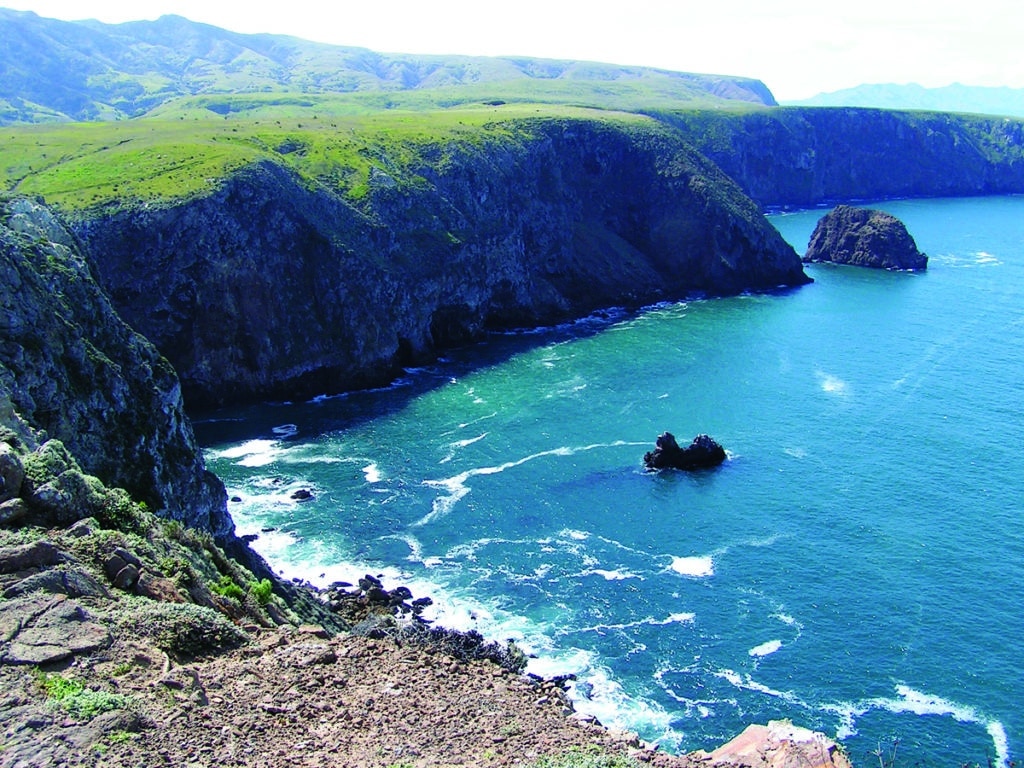
Lay of the Land
Tiny Santa Barbara Island is an outlier of sorts, while Anacapa, Santa Cruz, Santa Rosa and San Miguel islands extend westward in linear fashion from the California coast. The closer-in Anacapa (the only island with a derivative of its original Chumash name, Anypakh and Santa Cruz are visited almost daily by private skiffs and three-quarter-day party boats from the coastal ports of Ventura, Oxnard and Santa Barbara.
During the course of a fishing season, these islands can kick out excellent bites on calico bass, California yellowtail, white seabass, halibut and the ever-present rockfish. Santa Cruz, the largest of California’s islands at more than 96 square miles, is known for flurries of white seabass fishing when spawning squid are present.
Generally speaking, however, anglers in search of bigger bottomfish and a shot at trophy halibut and white seabass focus their efforts on the outer Channel Islands, Santa Rosa and San Miguel. Positioned beyond the jutting protection of Point Conception on the California coast, these two islands are exposed to the full surliness of the prevailing northwest wind and swells. Santa Rosa Island is affectionately referred to as Santa “Blowsa” by local anglers. And if the weather at Santa Rosa is acting up, you wouldn’t even think of running farther outside to San Miguel. Bad weather can keep boats tied to the dock for days at a time, and it definitely takes a seaworthy craft to make what can be a 50-plus-mile run.
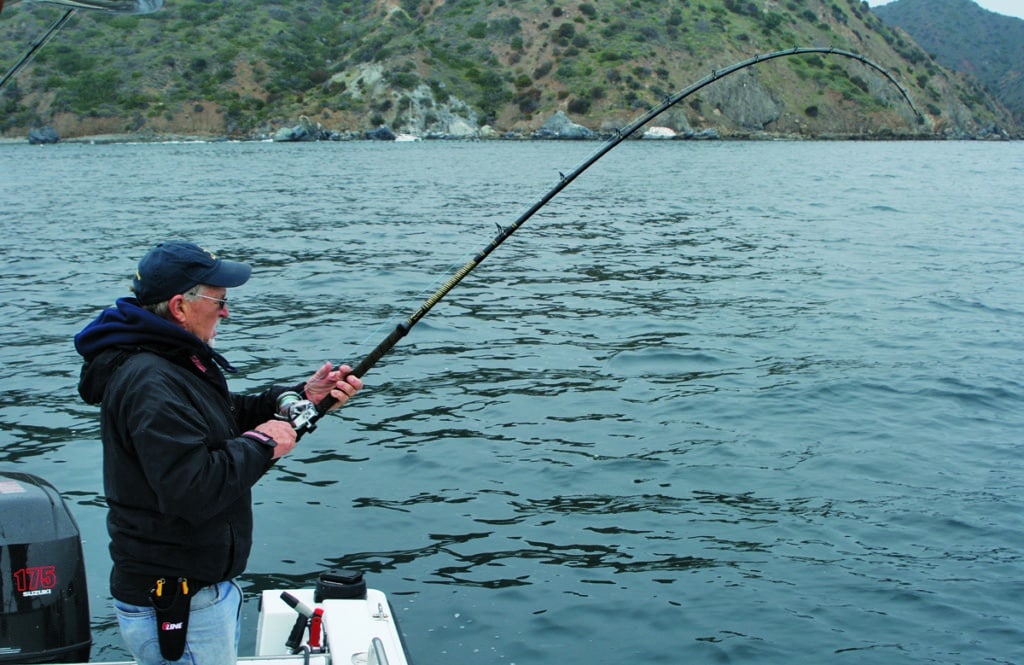
The linear orientation of the island chain does, however, provide some protection for boats making the trip to the outer islands. Depending on the direction of the weather, it’s possible to hide behind the islands for much of the journey. Still, there’s no mistaking when you leave the shelter of one island to “shoot the gap,” rocking and rolling until you pick up the lee of the next island. Once you reach your destination, the experienced captains who frequent these waters know plenty of places to tuck out of the weather and make the most of whatever fishing conditions they’re dealt.
“It can be tough to get out there, but that’s also a big reason why the fishing is so good,” says Pacific Dawn’s captain Pat Cavanaugh. “The outer islands don’t get nearly as much fishing pressure, and as a result, the numbers and size of the fish can be amazing. The seabass fishing can go off for weeks at a time.
“There have been more big California halibut caught over the past few seasons than I can remember in a long time. And the size and quality of the rockfish — particularly the big reds and lingcod — is as good as it gets outside of Alaska,” Cavanaugh adds.
The difficulty factor of reaching the outer islands is a big part of the adventure. You wake up in the morning, climb out on deck clutching your cup of coffee, and wonder what island you’re looking at in the distance. Every day out here is different, and to some extent, where you fish and what you fish for will be dictated by Mother Nature. If you’re lucky enough to get a nice, calm day (they do happen), then you have that many more options to explore.

Rock Bottom
While a wide variety of fish call the islands home, there’s is no doubt that rockfish make up the majority of the year-round catch (excluding California’s annual January/February rockfishing closure). There are dozens of rockfish species in these waters, with colorful names and even more colorful nicknames like vermillion rockfish, called reds, and copper rockfish, most often referred to as chuckleheads. Lingcod, which are not rockfish but a member of the greenling family, are usually included in the mix and considered a prized catch.
These fish and many others are targeted over rocky structure in depths ranging from 70 to 300 feet — conditions that exist in abundance around the Channel Islands. Here again, the outer islands shine, providing opportunities to target the biggest rockfish and lingcod in shallower waters. This allows for the use of lighter tackle and a variety of artificial lures.
You might call me a rockfish snob, in that I eschew the traditional bait and double dropper loop rig used by the majority of anglers. Instead I almost exclusively fish either heavy metal, single-hook jigs (known as iron) or large plastic swimbaits. The former, which I like to tip with a 6-inch Berkley Gulp curl-tailed grub for added action and scent, is fished by bouncing it up and down with sweeps of the rod, maintaining occasional contact with the bottom.
Capt. David Bacon of the Santa Barbara-based four-pack charter boat WaveWalker uses a two-in-one lure of his own creation he named the lingslayer, a heavy, hammered-metal Hopkins spoon with a large lead-head/plastic grub attached to bottom hook. Lingcod have big mouths and big appetites to match — and both these presentations are designed to provide these aggressive predators with a large-profile entree.

Last season, Pacific Dawn relief skipper Mike “Dog” Nickerson showed me how to fish oversize plastic swimbaits designed for targeting big rockfish and lingcod — and if you’ll pardon the pun, I’m hooked. You cast these giant baits as far down-drift as possible, let them sink to the bottom, and then take about 10 medium-speed winds on the reel. If you’re not bit, you drop it back and do it again. Once you drift over the lure, you can wind it up to the surface and start over. I quickly learned that these active predators often follow your swimbait almost to the surface before slamming it — so keep fishing it right to the boat.
“I’m bit!”
“Damn, he’s off.”
“He’s back again!”
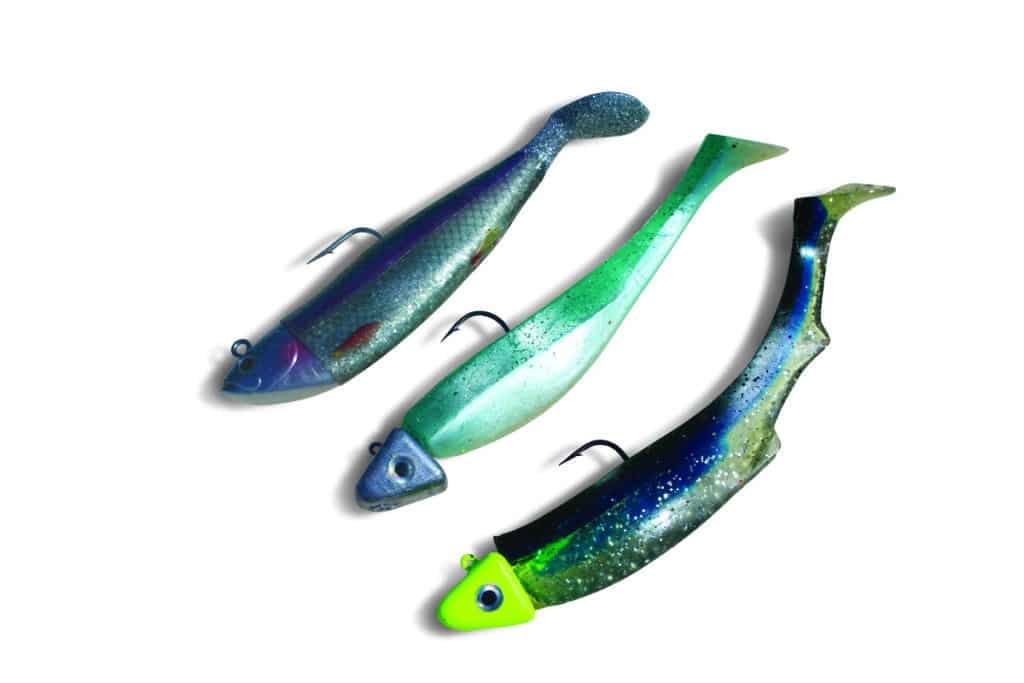
That’s what it sounds like when a group of anglers are up on the bow throwing swimbaits. Lingcod have a way of hanging onto the tail of the lure before engulfing it in their cavernous, tooth-filled jaws. It took some practice for me to resist the natural instinct to stop reeling and set the hook, instead of just reeling steadily through the bite until the rod loaded up. Once a solid connection is made, grind the fish steadily toward the boat without pumping, and be ready for a few strong runs and violent headshakes. In addition to lingcod up to 25 pounds, I’ve caught my fair share of jackpot-size reds and chuckleheads on these lures, as well.
Southern California manufacturers Candy Bar and Kustom Kraft make 7- to 9-inch swimbaits large enough to be fished on 6- or 8-ounce lead heads. Okuma’s Savagegear line includes Cutbait Herring swimbaits rigged on contoured lead heads weighing 8 or 16 ounces. I prefer to fish both jigs and swimbaits on a stout 8-foot graphite rod, paired with a conventional reel capable of holding at least 250 yards of 65-pound-test braid. Ten or 20 feet of 30-pound monofilament leader provides some shock absorption, and makes it easier to break off the inevitable snags.
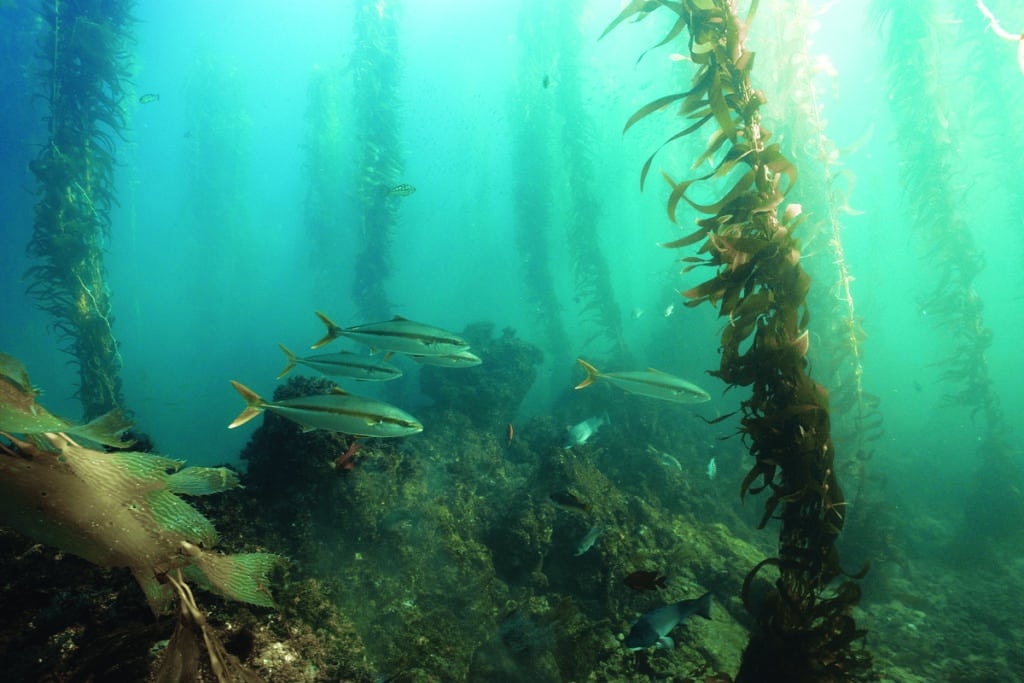
Seabass Strategies
While the more southerly islands of Santa Catalina or San Clemente are better known as prime white seabass destinations, Santa Cruz and Santa Rosa islands have delivered sustained early-summer bites over the past several seasons. And while the fish might not be as large on average, the potential for a wide-open bite on 15- to 25-pound fish is more than enough to lure in boatloads of seabass aficionados. And there is always a shot at connecting with a 40- or 50-pound “tanker” to boot.
My very first trip here opened my eyes to the subtle differences in Channel Islands seabass fishing. Instead of fly-lining live squid along the beaches or kelp lines, or drifting over squid nests, fishing is often done on the anchor in deep squid-spawning areas. The current often rips through these waters, and it’s not unusual to need 10- or 12-ounce sinkers to keep your offerings near the bottom. Crews who fish here definitely prefer spider-hitch dropper loops over the traditional loop used on rockfish rigs, with a long 18-inch dropper and a long-shank 7/0 Owner Aki Twist hook. When the current isn’t too strong, anglers on the stern can fish the middle of the water column by drifting back a squid weighted with just a ½- to 1-ounce egg sinker.
It’s not unusual to have a flurry of big Pacific barracuda or California yellowtail move through and bend several rods at once while anglers are fishing for seabass in this way. I’ve also seen plenty of big halibut hit the deck in the middle of a seabass bite. When the captain says it’s time to drift for halibut, all I have to do with this versatile rig is adjust the sinker size based on the water depth and speed of the drift.
In a way, this exemplifies what I love about fishing California’s Channel Islands. Here, every sunrise is an adventure story whose middle and ending are yet to be written — where you’re going to fish, how you’re going to fish, and what you’re going to catch can change from day-to-day, or even hour-to-hour. And if you hit it right, you might just come home with memories of your own Channel Islands bonanza.
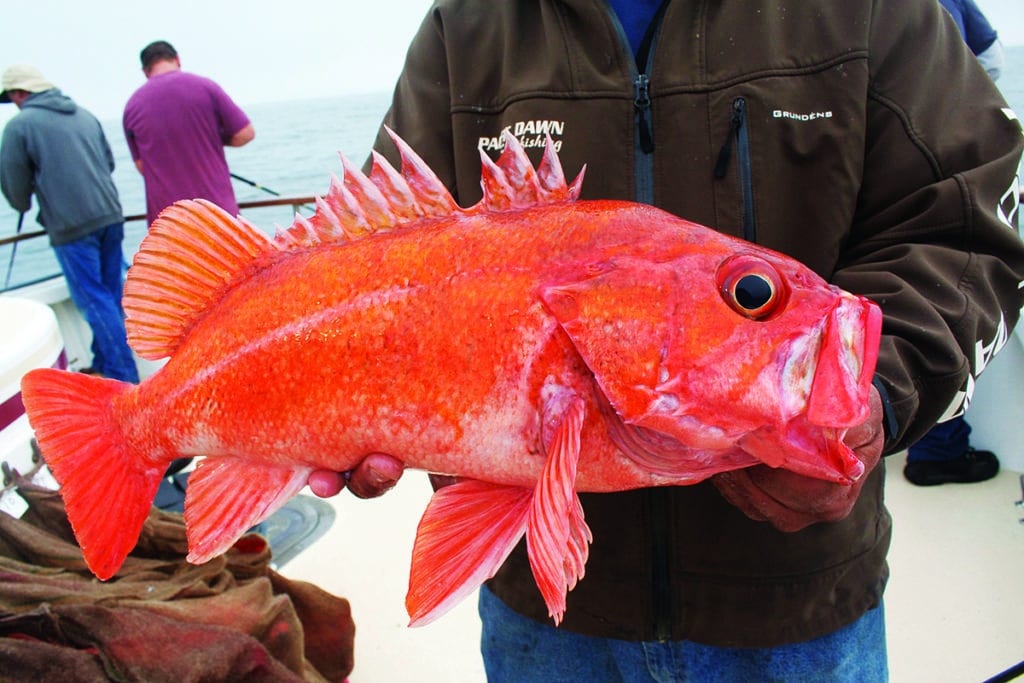
Watched Waters
The Channel Islands might be one of the most monitored and regulated marine environments in California. The five islands are designated as a U.S. National Park, and have the additional federal protection of being one of 14 National Marine Sanctuaries managed by NOAA. On top of this, roughly 25 percent of the island’s waters fall into a range of different state marine protected areas, where commercial and recreational fishing can be prohibited or restricted to varying degrees. I don’t know whether it’s because of the MPA closures or despite them, but fishing has been very robust over the past few years. To promote sport fishing in sanctuary waters nationwide (and to dispel the notion that marine sanctuaries are always no-fishing zones), for the past three years the office of National Marine Sanctuaries has supported a summer-long fishing photo contest called the Sanctuary Classic. Visit sanctuaryclassic.org for more info.
“The outer islands don’t get nearly as much fishing pressure, and as a result, the numbers and size of the fish can be amazing. The seabass fishing can go off for weeks at a time. “
— Pat Cavanaugh, Pacific Dawn‘s Captain
Channel Island Charter Fishing Services
Here are three charter services that specialize in Channel Islands sport fishing.
Channel Islands Sportfishing, 805-382-1612
Ventura Sportfishing, 805-676-3474
WaveWalker Charters, 805-895-3273
About the Author: A California native, Ron Ballanti enjoys fishing for anything that swims. When he isn’t fishing, shooting photos or penning articles, he runs a Los Angeles-based marketing agency specializing in fishing and marine clientele. He’s fished far and wide but has a special passion for angling along his home waters off the coast of Southern California.








